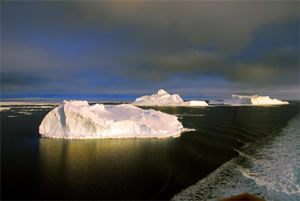Icebergs in the Southern Ocean
Click on image for full size
Ute Kaden/PolarTREC
Icebergs
Icebergs are large pieces of ice floating in the ocean that have broken off of ice shelves or glaciers in Earth's polar regions. They are a part of the cryosphere.
Approximately 90% of an iceberg's mass is below the surface of the seawater. Because ice is less dense than water, a small portion of the iceberg stays above the seawater.
Icebergs can be huge. The largest ones are known as ice islands. The widest iceberg on record was 80 kilometers across. The tallest known iceberg had 168 meters of ice sticking out above the water. Since the part above the water is only 10% of its total size, imagine how much ice a large iceberg has underwater!
In 1912, a brand new ship called the RMS Titanic, collided with an iceberg in the North Atlantic and sunk on its first voyage.& Only about a quarter of the passengers and crew who were on board the Titanic survived. After this huge disaster, the International Ice Patrol was formed to track icebergs in the North Atlantic, ensuring that other ships did not meet a similar fate. The Patrol first monitored icebergs from ships. Later, in the 1930s, airplanes were used to keep track of icebergs. Today, icebergs can be tracked using satellites. In an average year, nearly 500 icebergs pass through the shipping routes in the North Atlantic Ocean. The Patrol warns sailors when the danger of icebergs is high.
As they travel from the polar areas where they form into warmer waters, the ice melts, and icebergs become smaller.
Last modified April 18, 2007 by Lisa Gardiner.
You might also be interested in:
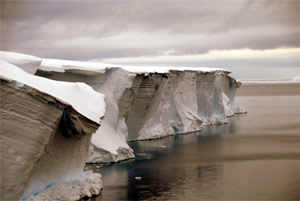
Frozen water is found in many different places on Earth. Snow blankets the ground at mid and high latitudes during winter. Sea ice and icebergs float in the chilly waters of polar oceans. Ice shelves fringe
...more
Would it be more difficult to pull an elephant or a mouse? If you pulled each animal with the same amount of force, the elephant would respond less to pulling, even if he didn’t pull back at all. That’s
...more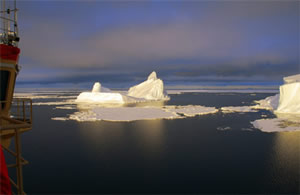
Most of us do not live in polar regions. We do not come in contact with icebergs or ice sheets very often. Most of us have only seen these things in photographs. However, no matter where you live, the
...more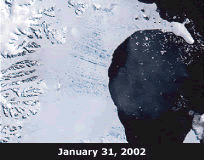
Ice shelves are a part of the Earth's cryosphere. Ice shelves are usually extensions of glaciers or ice sheets that cover the land. An ice shelf is a part of an ice sheet that extends from land out over
...more
Looking for online content that can be used for a climate change education course or module? Pages linked below can be used to support an introductory climate change education for either a unit or a full
...more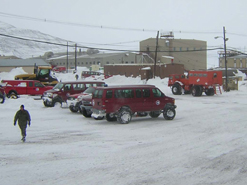
Polar exploration includes the physical exploration of the Arctic and the Antarctica. The Arctic is the area around the Earth's north pole and includes parts of Canada, Greenland, Russia, the United States
...more
What Will You Find There? South of the Antarctic Circle (at 66.5°S latitude) you will find the continent of Antarctica surrounded by the Southern Ocean, the geographic South Pole and the magnetic South
...more


